Our visit to the Hashemite Kingdom of Jordan would see us staying in the country for a total of four nights. We had planned to spend the first two nights in the capital, Amman, before heading to the ancient rock-cut ruins of Petra for the third night and the desert landscapes of Wadi Rum for the final night.
Our four-night stay would see us qualify for the Jordan Pass, which is an all-in-one tourist pass that covers the admission fee to most of the country’s top attractions (and also waives the visa fee upon entering the country). The base-level Jordan Pass costs 70 JD ($131) per person, which is pretty great value, since the admission to Petra alone is already 50 JD ($94).
Because of our arrival and departure times, though, we’d really only have three full days of exploring Jordan, which is a pretty tight itinerary for the country. In this post, I’ll talk about the day we spent in the northern part of Jordan exploring the city of Amman and visiting the nearby Dead Sea, and in the next few installments I’ll cover our southbound journey to Petra and Wadi Rum.
The Logistics of Getting Around in Jordan
Before getting into the travelogue, I wanted to talk about the logistical challenges we had in getting around Jordan.
The country’s tourist infrastructure was less developed than I had expected, and it seemed that most tourists either rented a car or hired a driver to get from place to place. Inter-city public transport was few and far between.
I considered hiring a driver, although I was quoted prices of about US$500 for a driver and car for four days. That seemed pretty reasonable, but also quite a significant expense that I left me wondering whether it was really necessary. We considered renting a car ourselves too, but neither of us felt comfortable driving around in Jordan, even though it would’ve most likely worked out just fine.
In the end, Jessy and I decided to do things independently by hiring drivers for short-distance journeys, and then taking the limited inter-city public transportation that was available to get from place to place. Our itinerary and associated costs ended up looking as follows:
-
Day 1: Taxi from Amman to Dead Sea and back (18 JD each way, 36 JD [$67] total)
-
Day 2: JETT bus from Amman to Petra (11 JD per person, 22 JD [$41] total)
-
Day 3: Local tourist bus from Petra to Wadi Rum (7 JD per person, 14 JD [$26] total)
-
Day 4: Taxi from Wadi Rum to Aqaba Airport (25 JD [$47]) + Royal Jordanian flight from Aqaba to Amman (4,500 Avios + $20 per person)
-
Total: $201 + 4,500 Avios
Compared to the price of hiring a driver, we probably saved ourselves around $400–500, but in return we had to deal with a much more laborious and inflexible journey across the country.
For example, a driver would’ve easily driven us back from Wadi Rum to Amman, instead of having to catch a separate flight using Avios from Aqaba, Jordan’s second-largest city in the south of the country. The bus ride on Day 3 was also a very negative experience – I’ll have more details about this in that installment.
For now, we find ourselves in Amman in the morning, having just polished off a nice breakfast at the W Amman and ready to head out for the day…
Amman Citadel
Jessy and I decided to spend the morning visiting Amman’s most prominent attraction, the Amman Citadel, before heading out to the Dead Sea in the afternoon. We catch an Uber to bring us there, which costs a very reasonable 2 JOD ($4) for the 10-minute journey.
The Amman Citadel is perched on top of a hill in the middle of the city. After scoring free admission to the site thanks to our Jordan Passes, we spent about an hour wandering around the ruins of the citadel.

Amman Citadel – Entrance
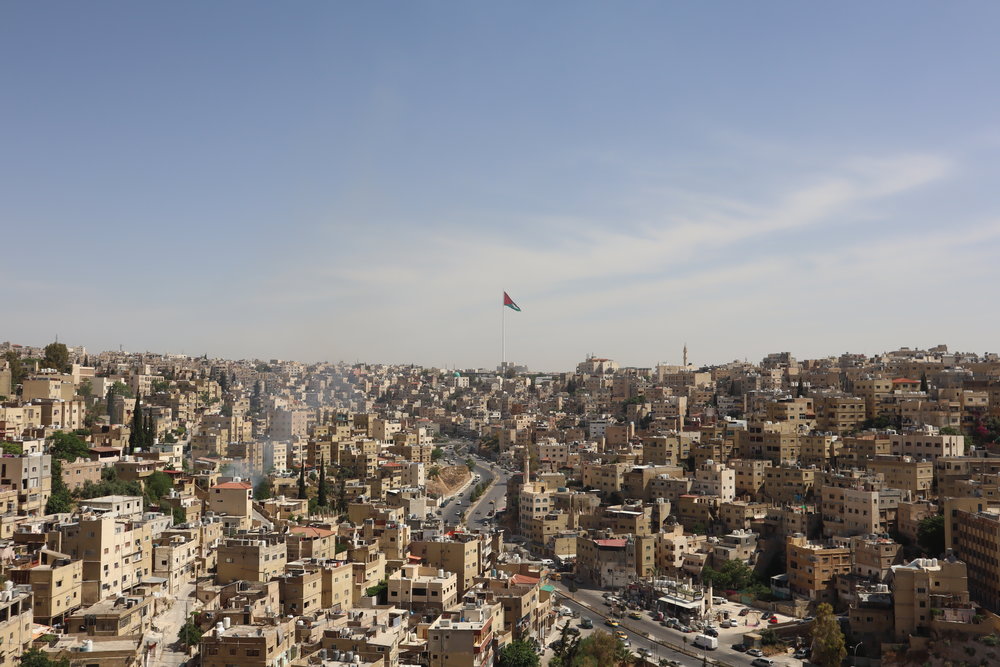
Amman Citadel – View from the Citadel
Amman, as a city, has lived through conquest by the Greeks, Romans, Byzantines, and the Umayyad Caliphate (one of the foremost Islamic empires that was active in the 7th and 8th centuries) over its storied history, and the Amman Citadel was continually inhabited throughout all these periods.
The modern site mostly consists of ruins, but identifying the few select vestiges that remain from each time period is what makes it interesting. For example, the Temple of Hercules dates back to Roman times, although only the hand of Hercules remains visible today.
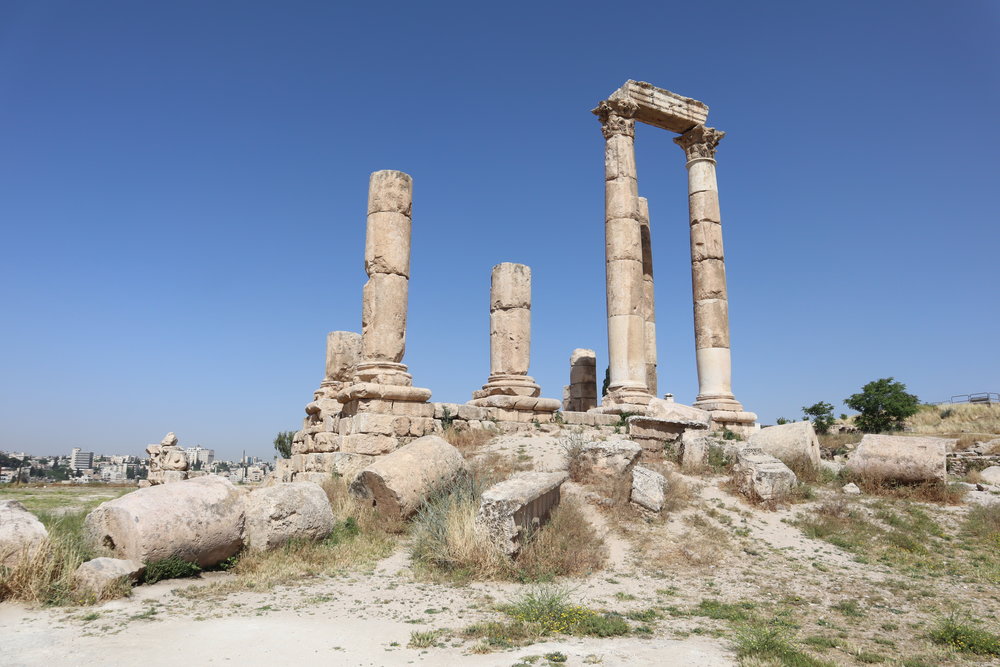
Amman Citadel – Temple of Hercules
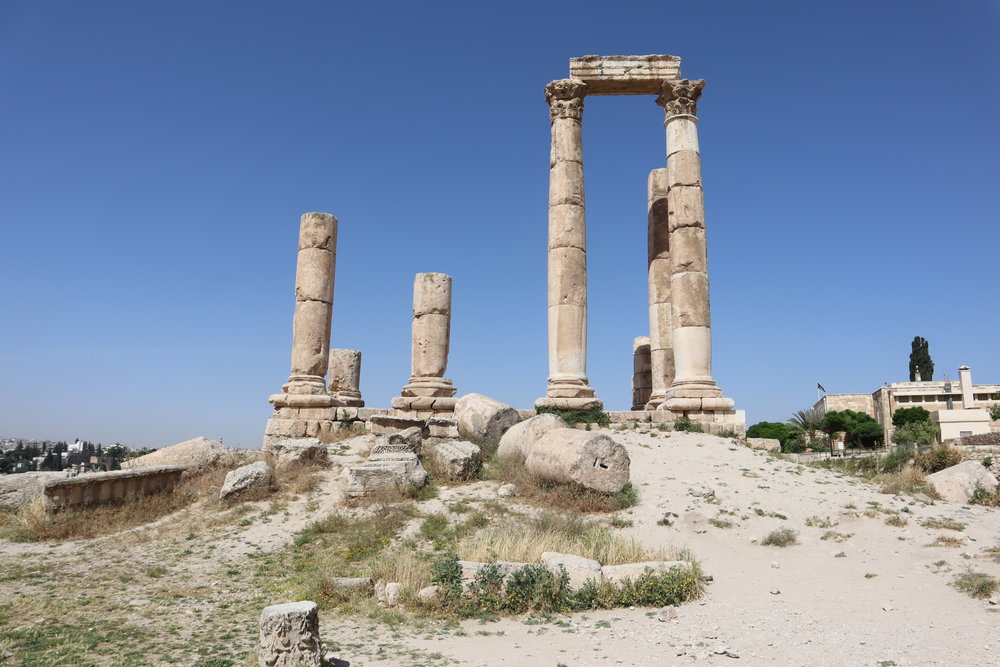
Amman Citadel – Temple of Hercules
The 6th-century Byzantine church occupies a more distant plot of land within the Citadel, although only a few lonely pillars and the blocks from the stone base are still left from the original structure.

Amman Citadel – Byzantine Church
By far the most well-preserved structure is the 8th-century Umayyad Palace, and even this is only a shell of its original grandeur. Most of the sprawling palace was destroyed in an earthquake, although the reconstructed dome at the entrance chamber gives visitors some sense of what the palace looked like at the zenith of the Umayyad Caliphate.
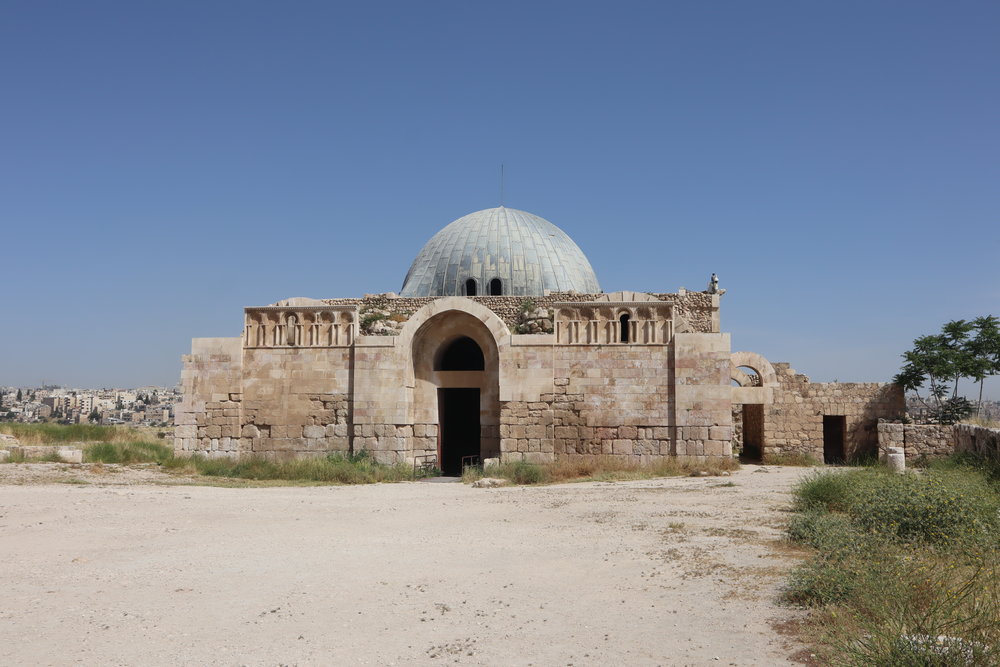
Amman Citadel – Umayyad Palace
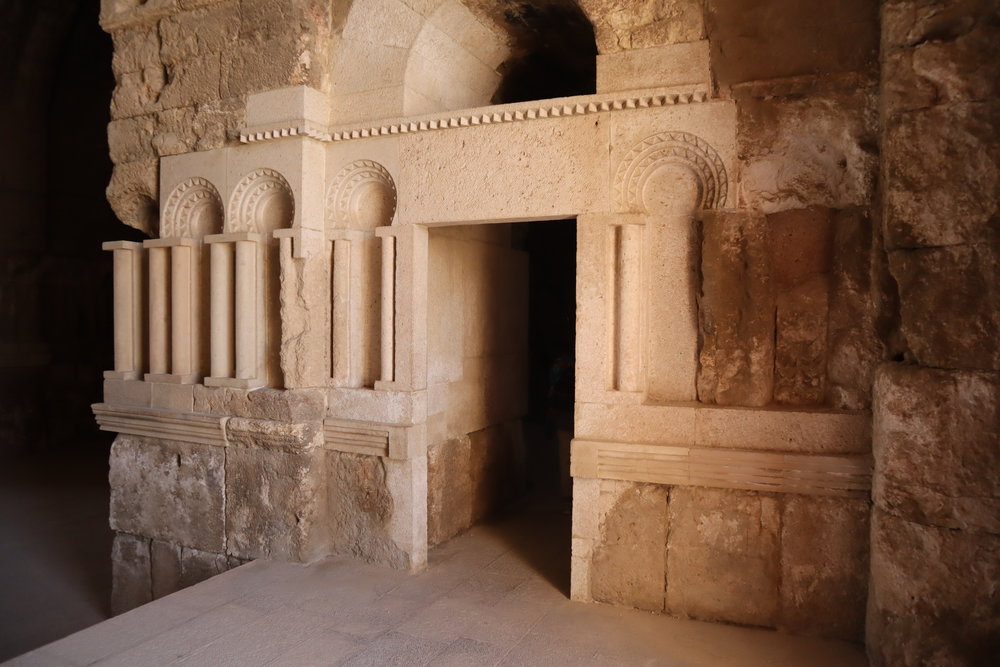
Amman Citadel – Umayyad Palace
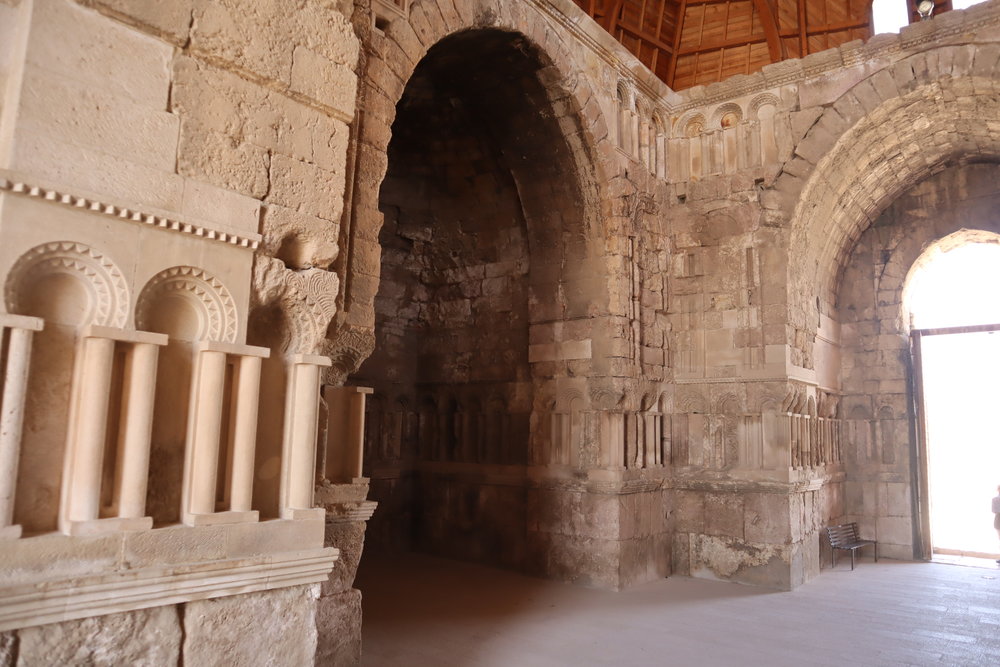
Amman Citadel – Umayyad Palace
After touring the archaeological site, take a moment to enjoy the views from the top of the Citadel. The city of Amman sprawls outwards from this central point, its uniform square buildings dotting the gently rolling landscape like tiny brown sugar cubes.
There was an undeniable sense of wonder in standing in one of the world’s oldest continually inhabited places, picturing the scenes that would’ve played out on this very horizon before my eyes had I been here a decade, a century, or a millennium or two ago.
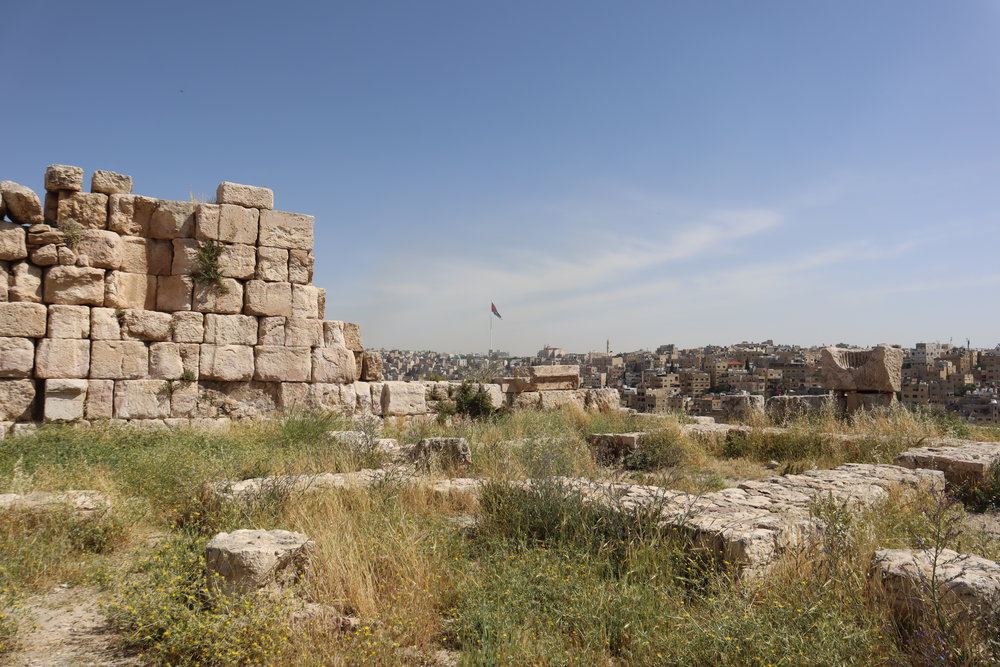
Amman Citadel – Citadel ruins
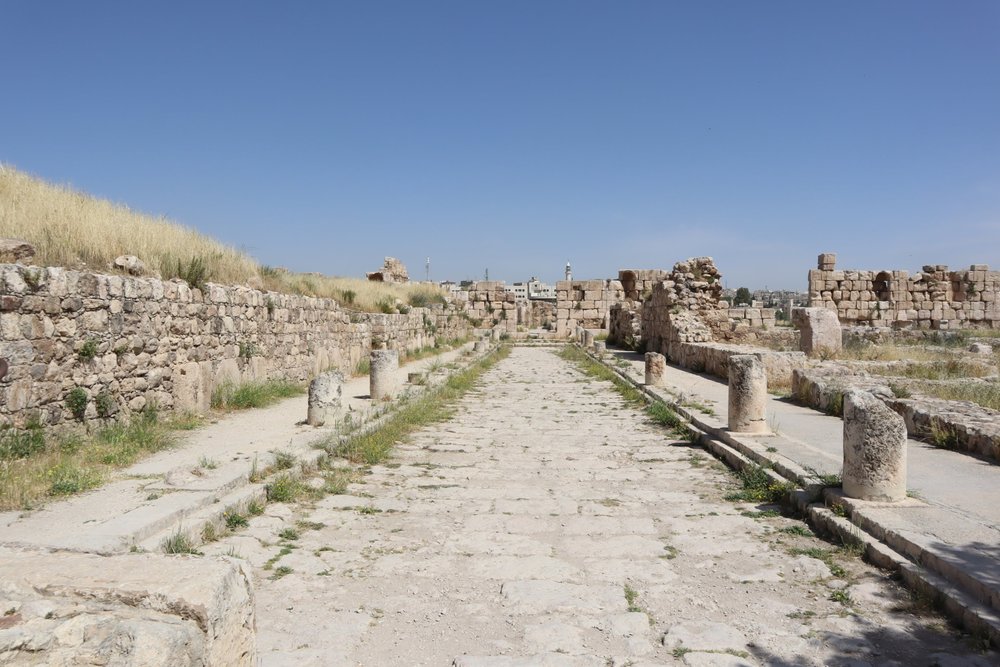
Amman Citadel – Citadel ruins
Visiting the Dead Sea
After briefly retreating to the hotel, Jessy and I headed out to the Dead Sea for the afternoon. We originally hadn’t even planned on visiting the Dead Sea, but we realized quite spontaneously that it was something we didn’t want to miss when we were in Jordan, so we slotted it in for the afternoon as a day trip from Amman.
It’s about an hour’s drive down to the Dead Sea, and we called an Uber to bring us there. While Ubers are easily accessible from within Amman for day trips like these, they’re much harder to book from the Dead Sea itself, so we had arranged a separate driver to pick us up on the return journey.
There are several ways to enjoy a visit to the Jordanian side of the Dead Sea. A handful of luxury resorts have been built along the coastline, and if you’re staying as a guest then you naturally have access to all the beach facilities.
The best resort in the region (and the one with the best beach, supposedly) is the Mövenpick Resort & Spa Dead Sea, but there are many other choices as well, including a Dead Sea Marriott Resort & Spa which you can book with Marriott Bonvoy points as well.
Travellers who are simply making a day trip can opt to purchase a day pass to one of these resorts, which costs about 35 JD ($65) per person, and you get the beach facilities, towels, and a buffet lunch included as part of the price.
As I had touched upon above, Jessy and I were feeling rather price-conscious during this trip, so we decided to visit the publicly accessible Amman Tourist Beach facility instead. This one charges 20 JD ($38) per person, but the facilities are a lot more basic, and you also have to pay extra for things like towels and lunch.
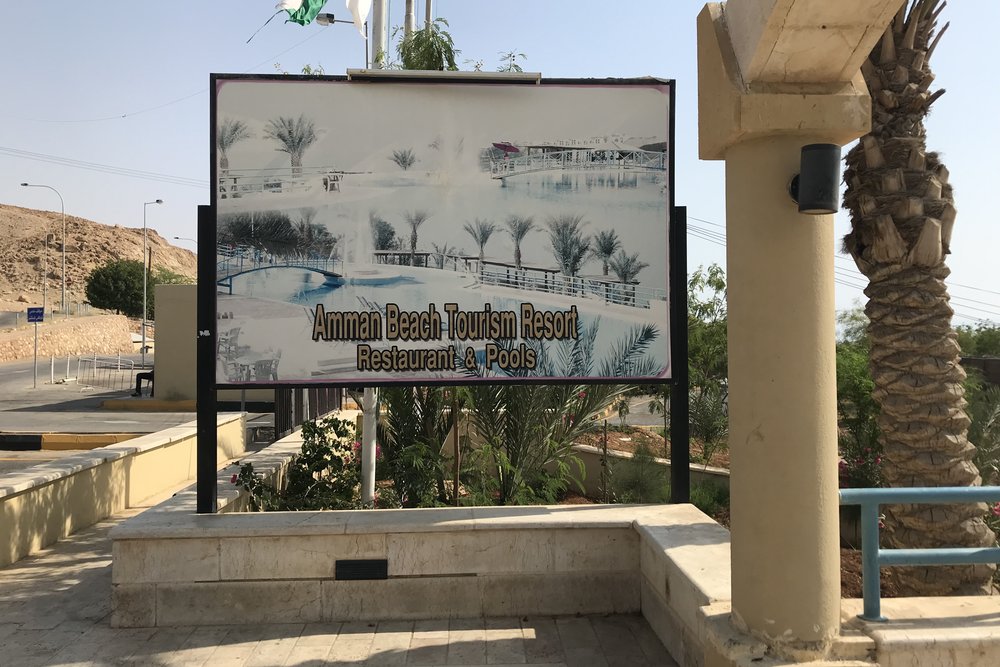
Dead Sea – Amman Beach facility
Like I had touched upon, while I enjoyed many things about our visit to Jordan, I really felt as though things were expensive than they should be – or perhaps more precisely, that the Jordanians have perfectly figured out how to extract the maximum out of the millions of tourists that land on their doorstep every year.
I can’t blame them for doing that, of course, but it did leave a slightly negative impression of what is otherwise a stunning country.
It was no time to quibble over pennies once we had paid the admission to the Amman Tourist Beach, though, because Jessy and I headed straight down to the water in order to experience the Dead Sea for ourselves.

Dead Sea – Amman Beach facility
This is the lowest point in the world, and thus plays host to the saltiest and most mineral-laden body of water. We made sure to leave all our belongings safely onshore, before wading into the translucent waters and falling backwards…
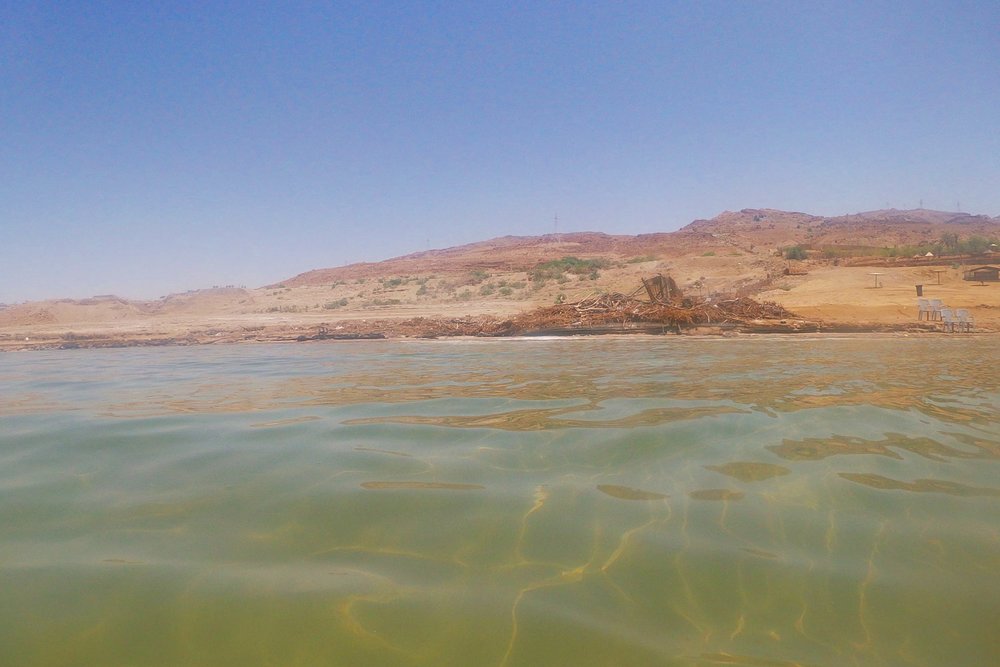
Floating on the Dead Sea!
…only to effortlessly float on the water!
I couldn’t help but instinctively laugh out loud at how ridiculous it was to just float on the water like that. There was simply no way you could possibly sink, even if you tried. If you’ve been to the Dead Sea, you’ll know the feeling, and if you haven’t, well, it’s really something you gotta try for yourself.
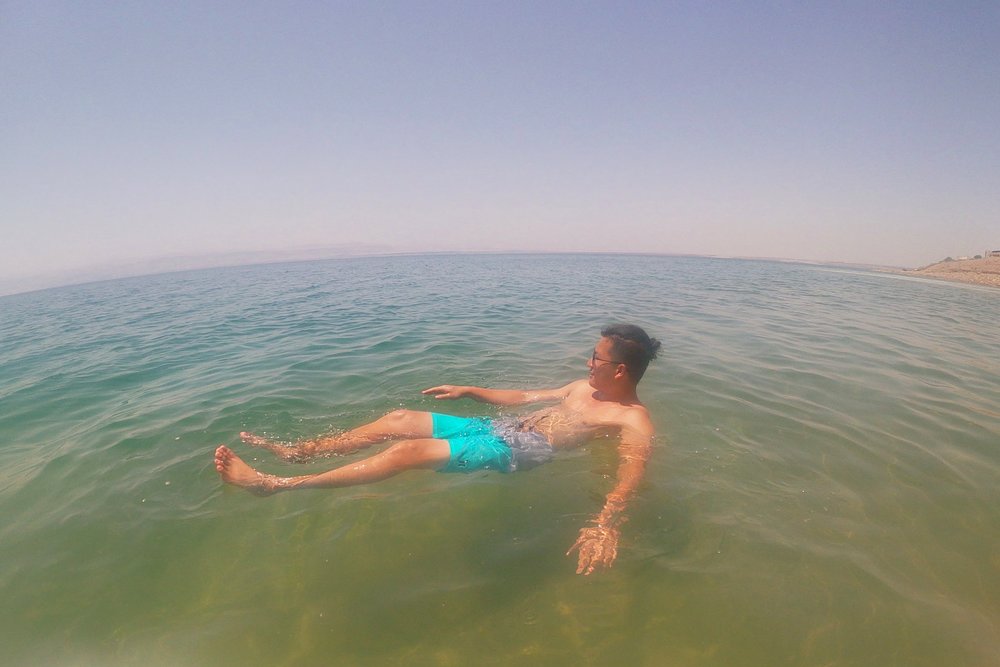
Floating on the Dead Sea!
Jessy and I had a wonderful time floating around and getting to know the Dead Sea in all its forms. We of course gave the water a taste, and it was overpoweringly salty – perhaps unsurprising when we later realized we could literally dig chunks of salt out of the sea floor.
Swimming was nearly impossible, thanks to the viscosity of the water and the slippery sheen that it left on our skin as a result of the high salt content. In addition, every slight cut and bruise we had on our skin would be subject to tingly little pangs of pain, and getting water in our eyes was a particularly nasty experience. The Dead Sea is no place to be frolicking around, that’s for sure!
We also paid the 3 JD ($5) per person to rub our bodies with some of the Dead Sea mud – which is rich with minerals and a popular souvenir to take home with you for its skincare benefits.
[foogallery id=”17391″]
After washing ourselves comprehensively to get all of the salt and sediment off our bodies, we spent a little bit of time relaxing by the pool here at the Amman Tourist Beach. Like I mentioned, the facilities here are rather basic, and certainly not up to the standard of any of the luxury resorts nearby.
Looking back, the price difference really isn’t too dramatic between the no-frills Amman Beach and the neighbouring Mövenpick, so next time I think I’d very much be willing to pay a little more and get a little more in return. As it turned out, this kind of sentiment would become something of a recurring theme throughout our visit to Jordan.
Conclusion
Our day in Amman and the Dead Sea got our Jordan leg of the journey off to a very promising start. Amman Citadel may be a site in ruin, but if you take the time to understand the historical origin of each of its constituent parts, you’ll be rewarded with a fascinating picture of the city’s multifaceted ancient history.
As for the Dead Sea, well, it may have been a spontaneous trip to begin with, but here in the sweltering heat of the lowest point on Earth, we ended up having a rewarding travel experience of the highest order. The sensation of floating effortlessly in the Dead Sea is no doubt one of the most unique natural phenomena that I’ve had the pleasure of experiencing, and I’ll definitely be eyeing a return to its eerily thick and translucent waters the next time I find myself in the region.


















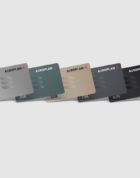

Thanks for the great series of Jordan posts. looking at going there next year and did not know about the visit jordan card. Following your petra post I will look at staying close to the entrance now rather than further out. I guess the dead sea is on the list now too. Thanks Enjoy your posts as they still have a little bit of el cheepo grit, reminding me of my firm rule in india and asia 30yrs ago that if the room cost more than $1USD find a cheaper room. Fast forward to now and up to a certian level a little bit more money gets a lot more pleasure.
neat. We were there earlier this year.
Did you get a chance to eat here at Hashem Restaurant?
https://www.google.com/maps/@31.9522111,35.9319546,3a,48.7y,354.76h,88.96t/data=!3m6!1e1!3m4!1sudg88RmgVms2dKAn3-NwYw!2e0!7i13312!8i6656
Best hummus and falafel I’ve ever had.
Great write-up Ricky, appreciate you sharing what could have been better about your trip so that others can avoid doing the same.
"next time I think I’d very much be willing to pay a little more and get a little more in return. As it turned out, this kind of sentiment would become something of a recurring theme"
Couldn’t agree more! I went backpacking for most of 2018 and found that if you’re willing to spend just a bit more, your experience will be much better (i.e. don’t be cheap at very opportunity). As a "backpacker" I was trying to minimize my costs at certain times where if I bothered to spent a bit more money, I would’ve saved myself the headaches (sometimes it was just a few measly dollars in SE Asian countries!).
This idea goes back to the value vs. enjoyment post you did previously. There’s a fine line in maximizing your savings and going through hurdles and headaches in that marginal improvement.
Agreed. In fact, Jordan is where this lesson really clicked for me (as you’ll see in the other posts). I’ve learned this lesson now for future trips!